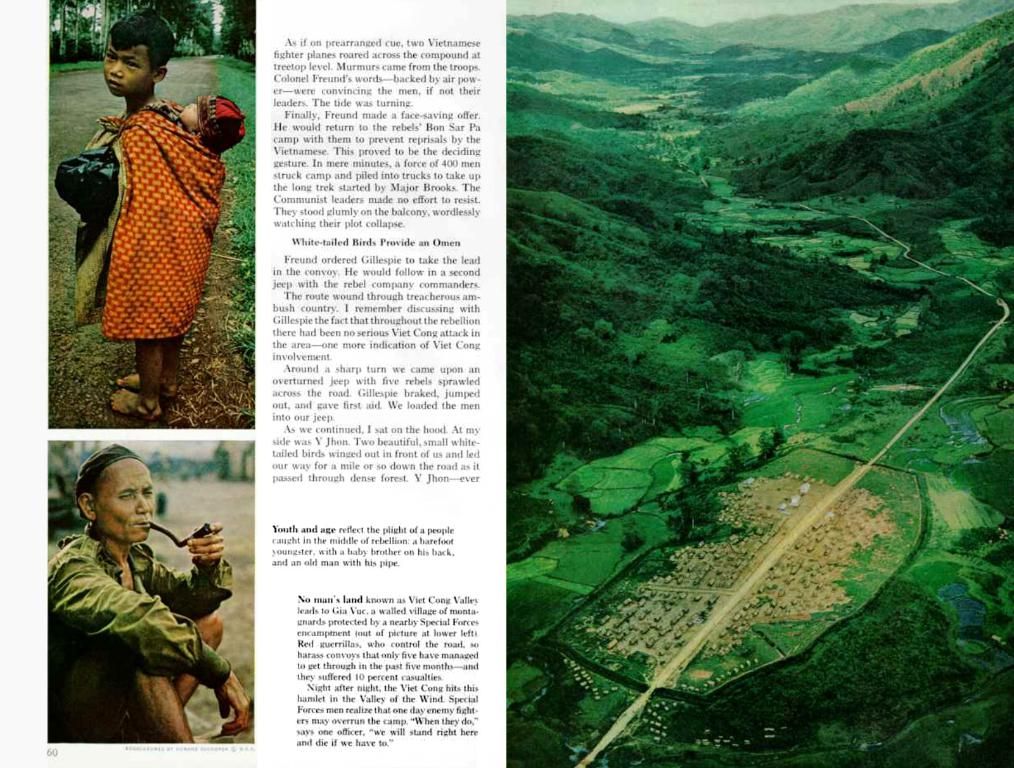Parking Assistance Woes: Tesla's "TeslaVision" Falls Short vs Competitors
Tesla's parking assistance system, referred to as Tesla Vision, frequently experiences malfunctions
When it comes to parking assistance, it seems Tesla's camera-heavy system often falls short compared to competitors. Some expert reports suggest this is due to Tesla's decision to rely on cameras instead of sensors like ultrasonic for its assistive system.
In numerous instances, the "TeslaVision" system has struggled with simple obstacles. According to reports from German courts, these missteps range from a cardboard box or bike rack to a child sitting in front of the car. Warnings about potential dangers can appear and vanish arbitrarily, making parking a guessing game.
Teslas equipped with camera systems have been found wanting in the face of similar tests even when compared to mass-market brands like Peugeot. Elon Musk made the switch from ultrasonic sensors to cameras for his assistive systems a few years ago.
The reports indicate that the tested Teslas fail at simple obstacles, with objects displayed as vague clouds by the camera or not recognized at all. A particularly concerning report highlights the Model Y, Tesla's top seller, in comparison to a version with ultrasonic sensors. The expert concluded that "TeslaVision is not equivalent in its function."
In another report, two Tesla Model 3s were tested, one with ultrasonic sensors and one with cameras. Inconsistent results were hard to avoid with the camera-equipped Tesla. Repeating the tests usually yielded different results, making the parking assistance "not sufficiently functional." The Peugeot, equipped with ultrasonic sensors, consistently performed better.
So, what's causing these issues? The camera system's reliance on precision calibration and its sensitivity to environmental factors like shadows and irregular lighting conditions are key challenges. Additionally, the lack of additional sensors like ultrasonic can lead to inaccurate readings and misjudgments. These factors, combined, contribute to the struggles TeslaVision faces compared to other parking assistance systems. [1]
[1] Key Challenges: TeslaVision struggles due to sensor limitations, environmental factors, complexity and calibration, and legal and safety concerns. [2][3][4][5][2] Sensor Limitations: TeslaVision's reliance on cameras may affect the system's ability to accurately detect obstacles in tight spaces.[3] Environmental Factors: Shadows and irregular lighting conditions can confuse the camera system, leading to misjudgments about the environment.[4] Complexity and Calibration: The camera-based system requires precise calibration to function optimally.[5] Legal and Safety Concerns: Issues with TeslaVision and other features have led to legal actions and safety concerns.
- The industry's concerns regarding Tesla's community policy extend to its employment policy, as the reliance on cameras for parking assistance, instead of sensors like ultrasonic, has become a contentious issue in the technology sector.
- In the finance industry, the performance of Tesla's parking assistance system, TeslaVision, has been compared to competitors, particularly mass-market brands like Peugeot, and found wanting, potentially impacting the company's bottom line.
- The transportation industry is watching the evolution of Tesla's parking assistance system, TeslaVision, with interest, as its vulnerabilities in various environmental conditions, such as shadows and irregular lighting, could potentially influence the development of autonomous automotive technology in the future.




